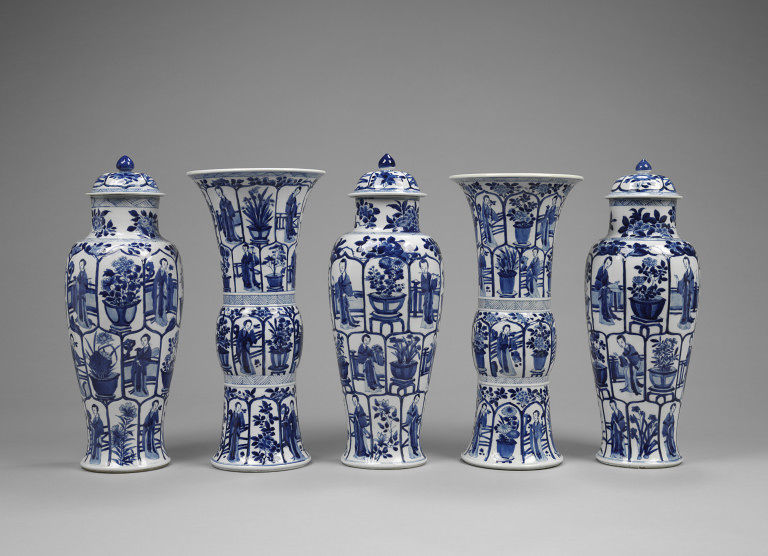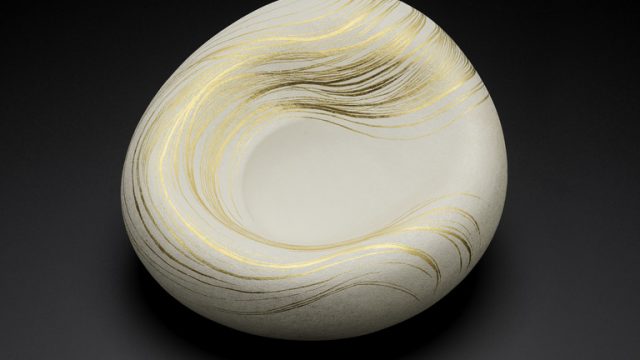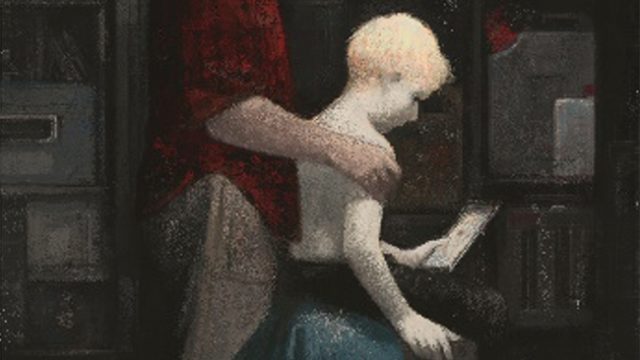It isn’t often museum curators have a chance to explore historical decorative schemes using vase sets to research the history of ceramic display, taste and patronage (unless you work for the National Trust). Vase sets, also known as ‘garnitures’ (ie. to garnish or adorn furniture or interiors), come to life when displayed on furniture or chimneypieces. To my eye, certain pieces of furniture, especially seventeenth-century cabinets, look undressed when not garnished with matching vase sets or symmetrical assemblages of similar ceramics.
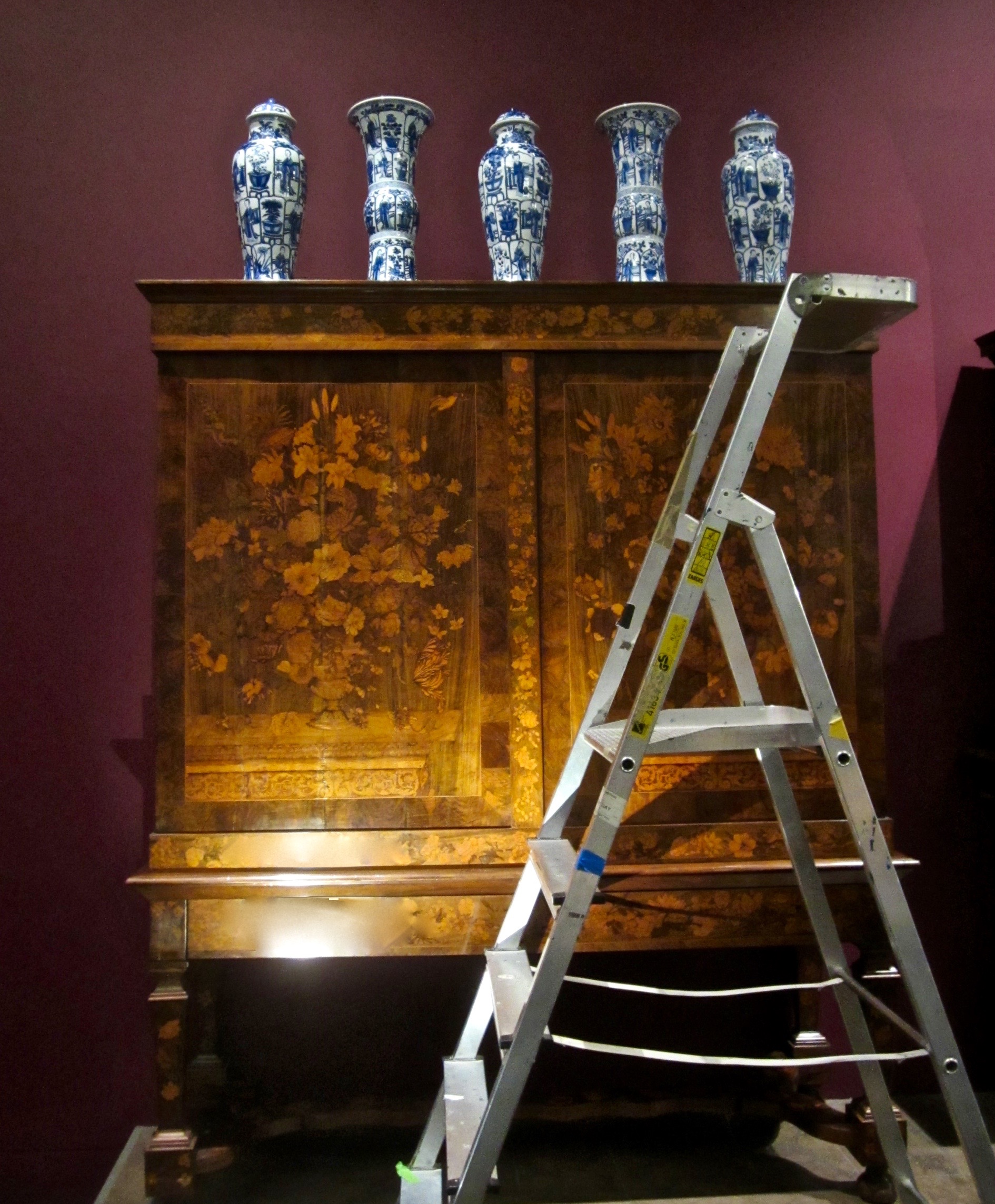
Historic houses routinely display ceramics on furniture and chimneypieces just as their original owners did, but for security reasons, this is not always possible in museums with open access and it wasn’t feasible for our display in Room 146. Fortunately, a solution was found in a video!
We were thrilled when Joanna Jones, the V&A’s Senior Content Editor, Digital Media, offered the chance to do a video for the Museum’s website on an aspect of our display, Garnitures: Vase Sets from National Trust Houses, in the Ceramics Galleries, Room 146, sponsored by The Headley Trust. We elected to film three V&A garnitures: a Japanese set ( C. 1507-11-1910) on a marble chimney-piece; an assembled silver set (LOAN:GILBERT.615:1, 2-2008 and M.46-1914) on a French cabinet; and a five-piece Chinese porcelain garniture of covered jars and open beakers made around 1690-95, on both a Dutch and an English cabinet. The three cabinets in the British and Europe 1600-1815 Galleries, one Dutch, one French and one English, are of different proportions and therefore dictate or limit the ceramic displays according to their “footprint”. They also suggest three national styles common in the seventeenth century. Fortunately, we had enthusiastic support for the video from the Asian, Furniture, Sculpture, Metalwork and, of course, Ceramics & Glass departments. Dawn Hoskin, an assistant curator in the Ceramics & Glass Department, was the project coordinator, and a brilliant one at that!
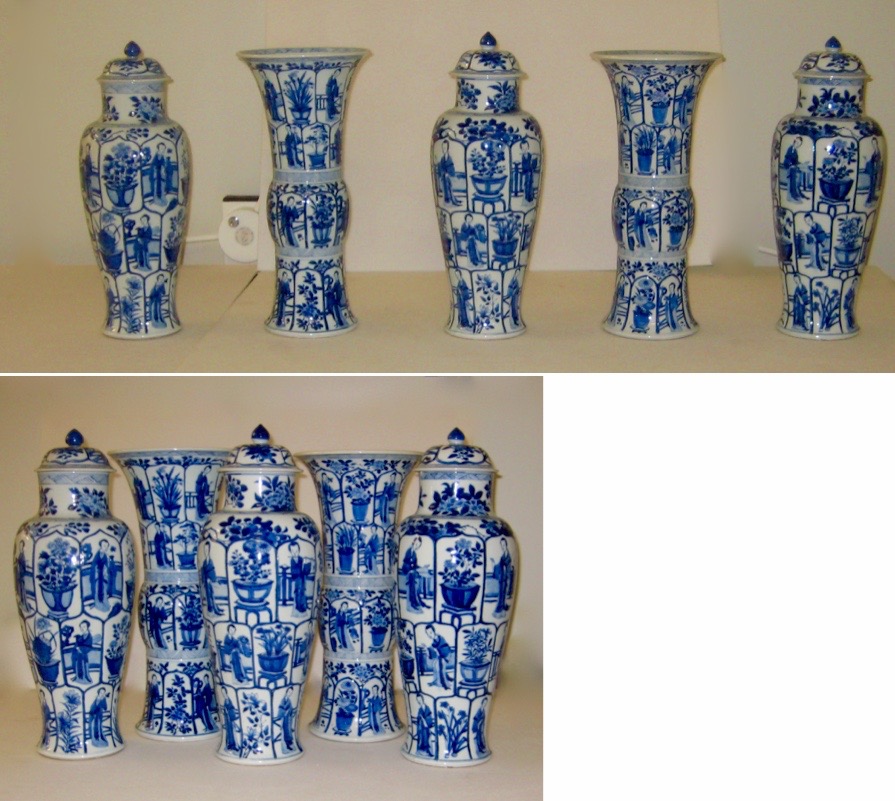
In preparation for the display in Room 146, I had had the opportunity to “play” with the V&A’s five-piece Chinese garniture with East Asia curator Yu-Ping Luk. We were able to see the different ways a garniture could be displayed – spread out or densely arranged – depending on the “foot print” of the cabinet or chimneypiece where it might be placed historically. This helped to inform the ‘tableaux’ created for the video.
Once the V&A’s objects were selected for the video, Hanneke Ramakers, one of the V&A’s ceramic conservators, examined them to see if they were in good condition for handling and checked their stability when placed on uneven wooden surfaces. They were then individually weighed. Furniture conservator Nigel Bamforth examined the cabinets, especially the top surfaces for any possible impact of the weight, critical in the case of the painted or japanned cabinet, and suggested the materials that needed to be used to lay under the ceramics to protect the wood surfaces. Victor Borges, sculpture conservator, advised on the marble chimneypiece in the Norfolk Music Room. All gave a resounding thumbs up!
We created a storyboard, with pictures of objects photoshopped in their desired positions along with historic images to inspire the V&A’s photographer and Motion Media Manager, Peter Kelleher. Dawn pre-booked technical services for assistance on the days of the shoot through Team Manager Matthew Clarke and organised a ‘walk-through’ with Matthew the week before to identify any access issues or concerns. The actual filming took place over two mornings before the Museum opened to visitors. The vases were then temporarily installed above the furniture and ready for their “close-ups”!
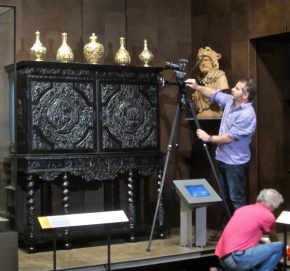
The most exciting ‘tableau’ involved placing an assembled set of two silver bottles from the Gilbert Collection alongside the V&A’s set of three silver vessels – all English, about 1675, and after Chinese porcelain shapes – on a French ebony-veneered cabinet, of about 1650. The inspiration was found in the diary of John Evelyn, historic photographs of the silver garnitures at Knole, Kent (National Trust) and French engravings. The contrast of dark and light was stunning and must have looked amazing by candlelight. It was wonderful to capture the atmosphere on film for others to experience.
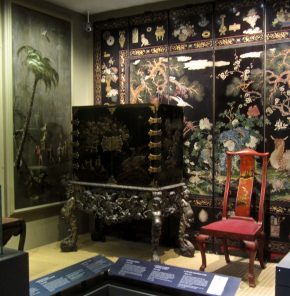
In the course of my research it was apparent through inventories and images that pre-1750, wealthy English consumers, preferred massed or assembled “garnitures” of mixed Chinese, Japanese and Dutch ceramics above small cabinets rather than matched five-piece sets, which were more common in The Netherlands (three-piece sets infact were much more common in England). An example of this English taste appears above a cabinet in a painting by Marcellus Laroon, the Younger, in the Royal Collection Trust. This was probably a fashion imported from France, as seen in the detail of a portrait of madam de Montespan, the official mistress of Louis XIV.
We wanted to experiment with these two styles on an English Japanese-style cabinet painted to look like lacquer and raised on a silver-painted carved wood stand in the British Galleries. It is a form frequently found in British country houses, where large cabinets of the Dutch and French type are rarely found. First we installed the five-piece matched Chinese porcelain vase set, and them a symmetrical assembled “garniture” of over 20 pieces. The results are quite dramatic.
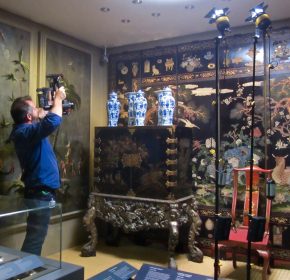
Reino Liefkes, Senior Curator, Ceramics & Glass department, has been my co-curator for the display, and wrote the introduction to the catalogue, Garnitures: Vase Sets from National Trust Houses, V&A Publishing, London 2016. Here, Reino has the fun of “playing” with the assembled English-style “garniture”, with stunning results!
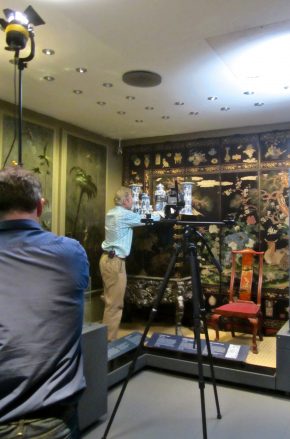
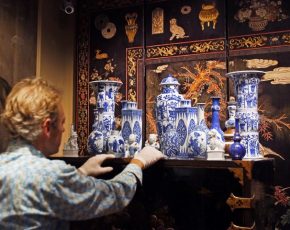
The final tableau was installed on the most magnificent chimneypiece in the V&A collection. The white marble chimneypiece was possibly carved by James Lovell (act. 1752-77) to designs of around 1752-56, prepared by Giovanni Battista Borra (1713-70), architect of the celebrated Norfolk Music Room. The room was in Norfolk House on St. James’s Square.
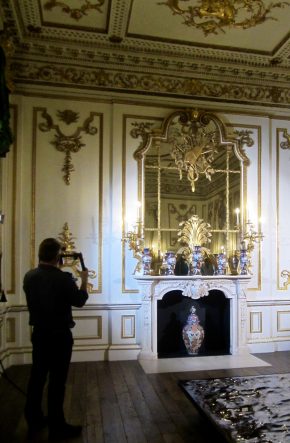
We selected a colourful porcelain set made in Japan in Arita, around 1700-20.
It is immediately obvious that a single ceramic vase would be lost in this extravagant interior, and that only when displayed as a set with a repeated identical motif, are the vases able to create a single bold unit or mass capable of holding their own in this ornate interior. Breathtaking!
Recently, Dawn Hoskin was looking through the Guard Book photographs in the Archives and found that in 1951, V&A curators had dressed the garniture in the Norfolk House Music Room with a Dutch delft five-piece vase set garniture. The set is by the set is signed ‘Roos’ and made at the ‘De Roos’ workshop in Delft, about 1700-30.
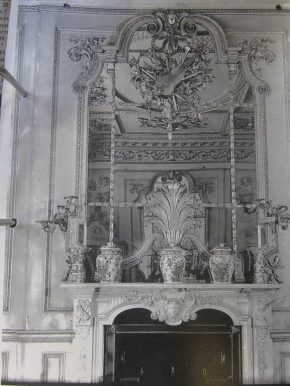
The polychrome decoration is not common, and imitates Chinese porcelain painted in the famille verte (green family) or Qing wucai (five-colour) palette of the 1660-80 period. The set is not displayed in the traditional manner, as seen below, alternating between jars and beakers, presumably the shape of the marble shelf dictated the arrangement.
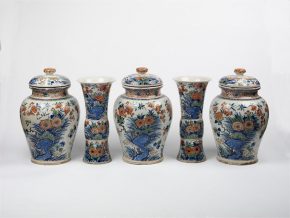
Here is a link to the YouTube video
Reino Liefkes narrates the story, edited by Peter Kelleher and his team . Hope you like it!
#GarnituresVaseSets
#whatsonmymantel
